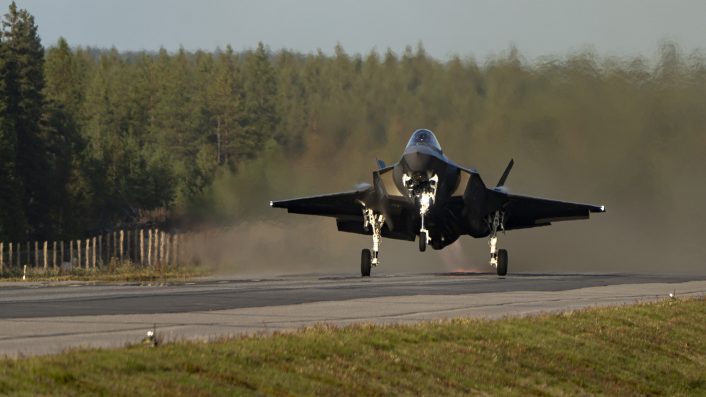U.S. Air Force F-35A Lightning II fighter jets take part in Finnish Baana24 exercise underway in Finland.
On Sept. 4, 2024, two F-35A jets belonging to the 495th Fighter Squadron of the 48th Fighter Wing operated out of a road strip in Finland for the first time. The two Lightning II aircraft took part in Banaa, the yearly dispersed operations drills of the Finnish Air Force.
Stronger together! 🇫🇮🇺🇸
The United States Air Force’s F-35A Lightning II fighter jets landed a moment ago for the first time at a Finnish highway strip in Hosio, Ranua in the #Baana24 exercise.#ilmavoimat #ImminentField24 @Laplsto @HQUSAFEAFAF@NATO_AIRCOM pic.twitter.com/Gv3YROw2tV
— Ilmavoimat (@FinnishAirForce) September 4, 2024
The landing on Hosio Highway Strip, Ranua, Finland, marked the first time in history a U.S. fighter aircraft operated on a Finnish highway strip. During the exercise U.S. Air Force Airmen expanded on Agile Combat Employment capabilities by learning austere environment aircraft landing and take-off operations and techniques from their Finnish counterparts.
On the very same day, German Eurofighter aircraft also took part in Banaa24, landing for the first time on the Hosio highway strip in Ranua, Laplan.
Willkommen in Finnland! 🇫🇮🇩🇪
Also #NATO Allies take part in the #Baana24 exercise. Today, the German Air Force’s Eurofighter Typhoon jets operated for the first time from the Hosio highway strip in Ranua.#ilmavoimat #ImminentField24 @Laplsto @Team_Luftwaffe @NATO_AIRCOM pic.twitter.com/8g2hq2dZay
— Ilmavoimat (@FinnishAirForce) September 4, 2024
The U.S. F-35A participation in the Finnish Baana24 drills comes approximately one year after two F-35As of the RNoAF (Royal Norwegian Air Force) operated out of a road strip in Finland for the first time: on Sept. 21, 2023, the two Lightning II aircraft landed on a road near Tervo, in the province of Eastern Finland, as part of the Baana23 dispersed operations exercise.
The landing on the Finnish motorway by the RNoAF F-35As last year marked the first time a CTOL (Conventional Take Off and Landing) variant of the Lightning II carried out highway operations. Notably, the Norwegian F-35s featured the distinctive fairing on the upper rear fuselage between the vertical tails, which houses the aircraft’s drag chute. The F-35s did not deploy this chute that it’s designed for operations in Arctic conditions, allowing the aircraft to decelerate quickly on icy runways under windy circumstances. Currently, only Norwegian F-35s are equipped with this drag chute pod.


